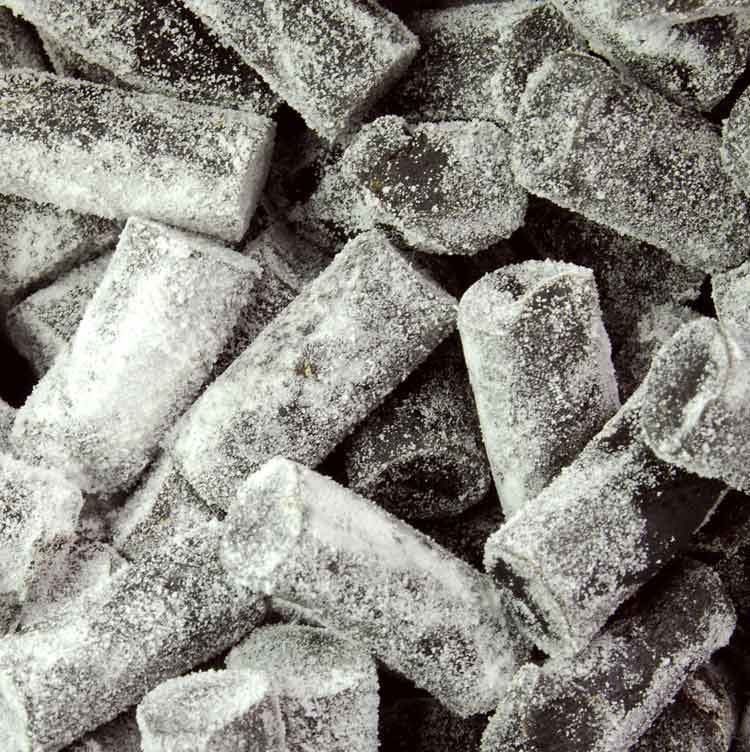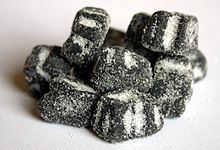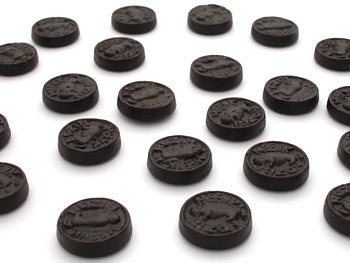Alternative names Salmiak, salmiakki Place of origin Finland Serving temperature Room Temp | Type Liquorice Region or state Scandinavia | |
 | ||
Similar Liquorice, Salmiakki Koskenkorva, Wine gum, Surströmming, Koskenkorva Viina | ||
Japanese people vs salty liquorice bataar
Salty liquorice, also known as salmiak or salmiakki (in Finland), is a variety of liquorice flavoured with ammonium chloride, common in the Nordic countries, the Netherlands, and northern Germany. Ammonium chloride gives salty liquorice an astringent, salty taste (hence the name), which has been described as "tongue-numbing" and "almost-stinging". Salty liquorice is an acquired taste and people not familiar with ammonium chloride might find the taste physically overwhelming and unlikeable. Salty liquorice candies are almost always black or very dark brown and can range from very soft to very hard and may be brittle. The other colours used are white and variants of grey. Salty liquorice is also used as a flavouring in other products, such as ice creams and alcoholic beverages.
Contents

History
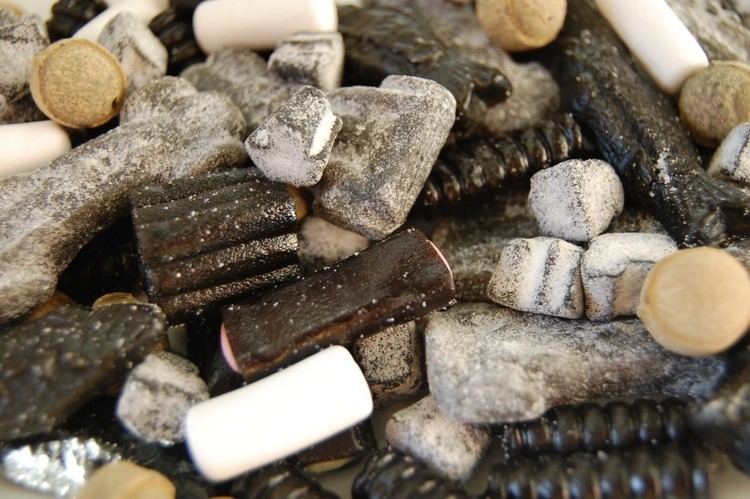
The words salmiak and salmiakki are derived from an archaic Latin name for ammonium chloride, sal ammoniacus, meaning "salt of Ammon". "Ammon" in turn refers to the temple of Ammon at Siwa Oasis, where ancient Greeks found ammonium chloride. The word ammonia has the same origin. Ammonium chloride has a history of being used as a cough medicine, as it works as an expectorant. Finnish author Jukka Annala speculates that salty liquorice has its origins at drug stores that manufactured their own cough medicine. Where and when ammonium chloride and liquorice were first combined to produce salty liquorice is unclear, but by the 1930s it was produced in Sweden, Finland, Norway, Denmark, and the Netherlands as a candy.
Types
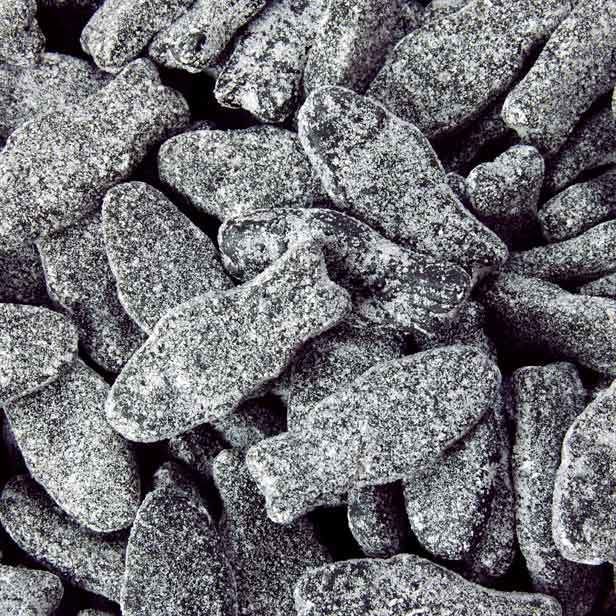
Different languages often refer to salty liquorice as either "salmiac liquorice" (such as salmiaklakrits in Swedish, or salmiaklakrids in Danish), or simply "salty liquorice". The Dutch refer to it as "Zoute Drop" or even a variety called "Dubbel Zoute Drop" (double salted liquorice). In addition to ammonium chloride, salty liquorice candies are sometimes flavoured with other strong flavours like table salt. A common shape for salty liquorice candies is a black diamond-shaped lozenge.

The strength of the confectionery depends on the amount of ammonium chloride used, which varies by country and what's considered a safe amount. In Sweden for example, the most popular types of salty liquorice contain an average of 7% of ammonium chloride. In 2012 there was a European Union proposal to limit the amount to 0.3%, which was met with wide opposition. Although the European Union now regulate the use of ammonium chloride to 0.3% in most foodstuffs, there is no specific restriction for it in liquorice or ice cream.
Other uses

In addition to being used in candy, salmiak is also used to flavour vodka, chocolate, distilled rye brandy, ice cream, cola drinks, snus, and meat.
